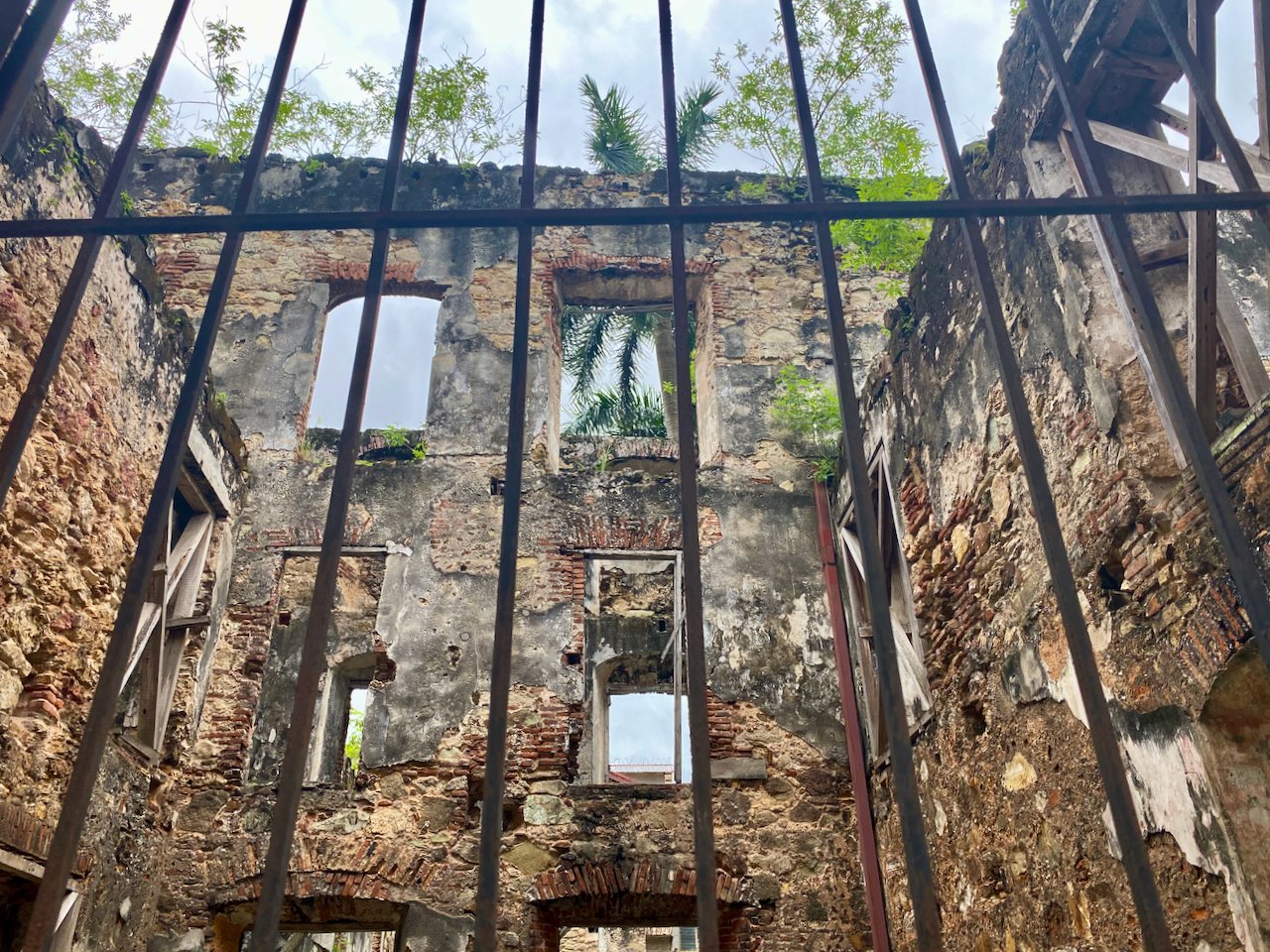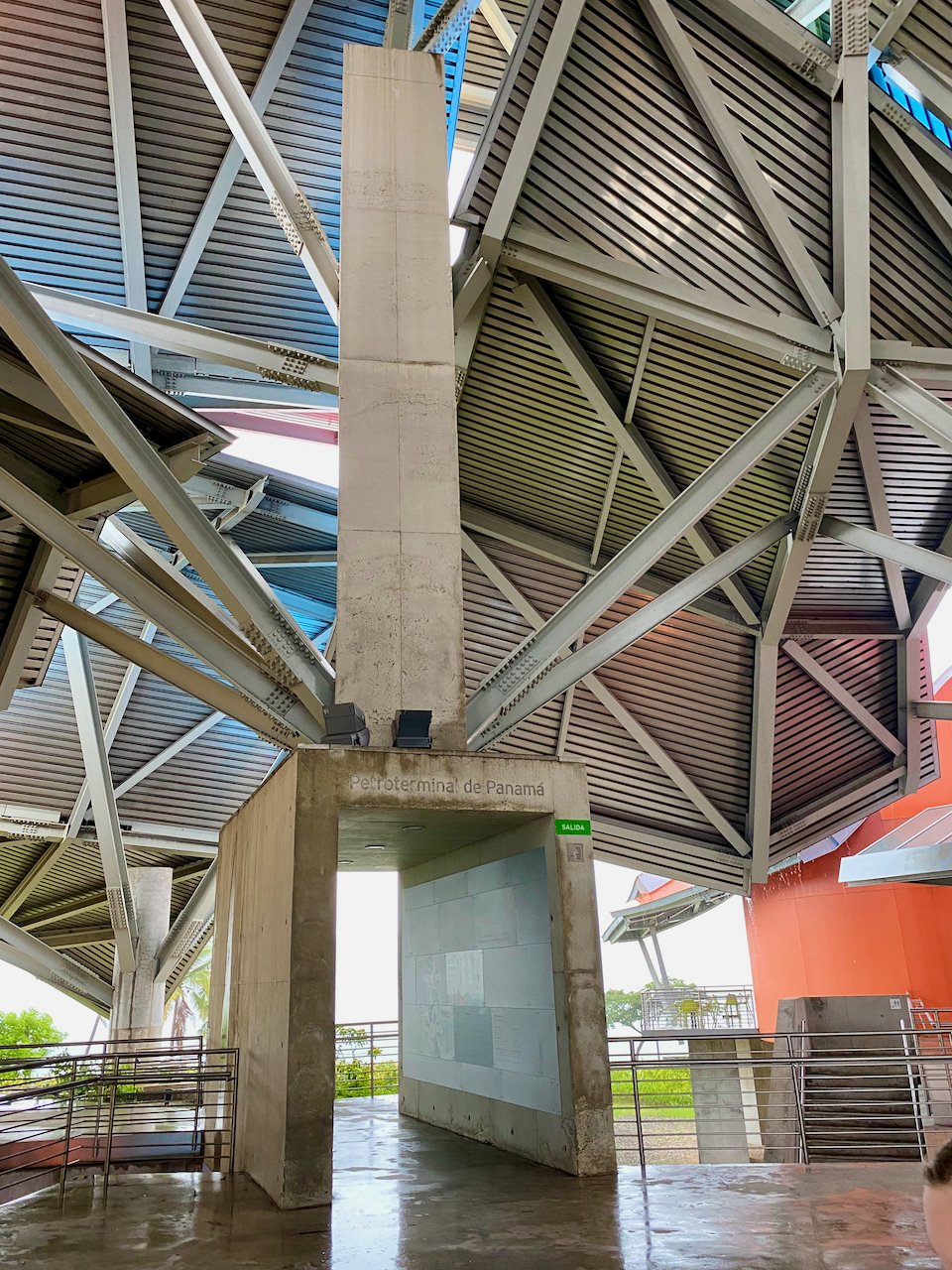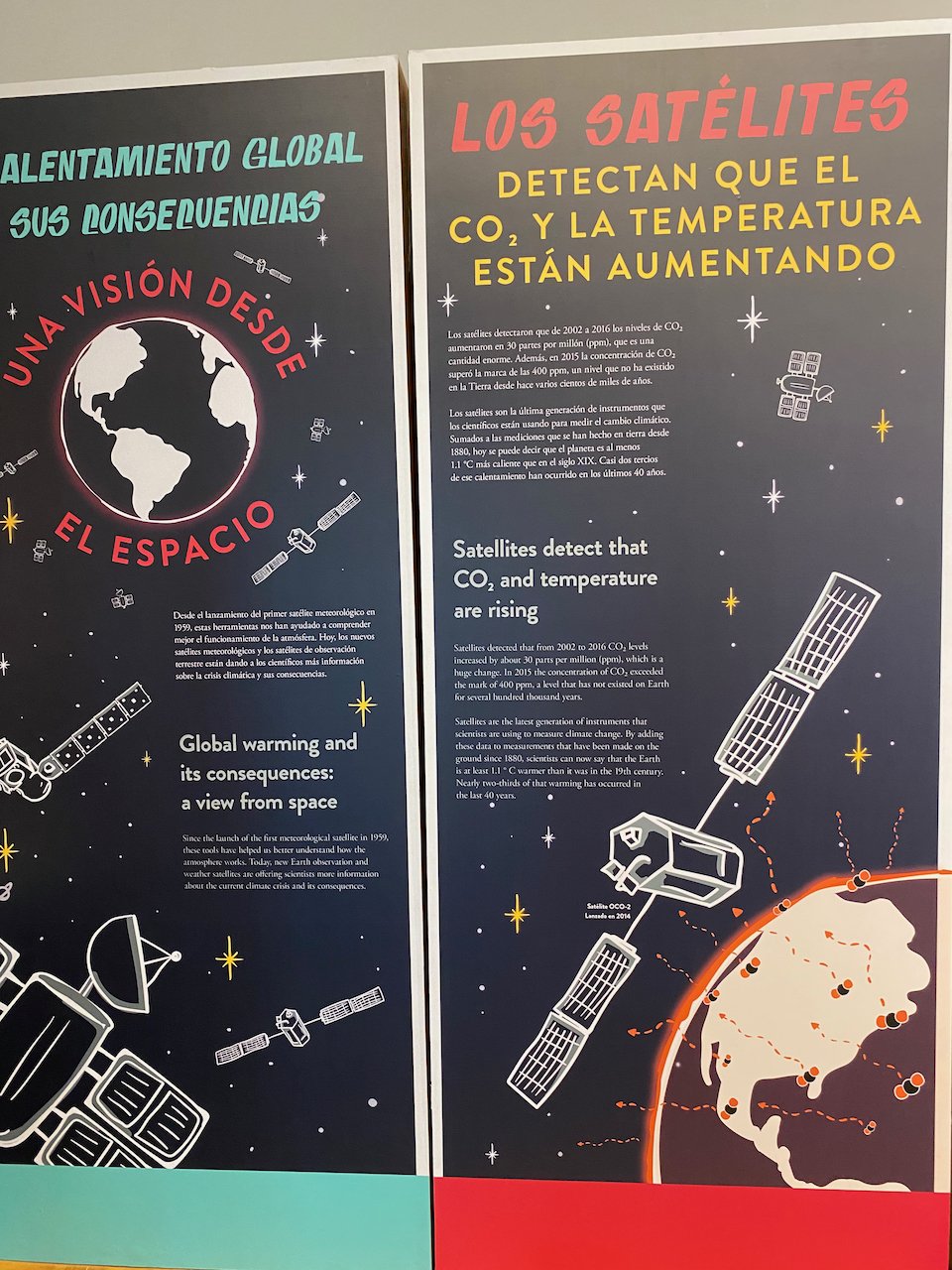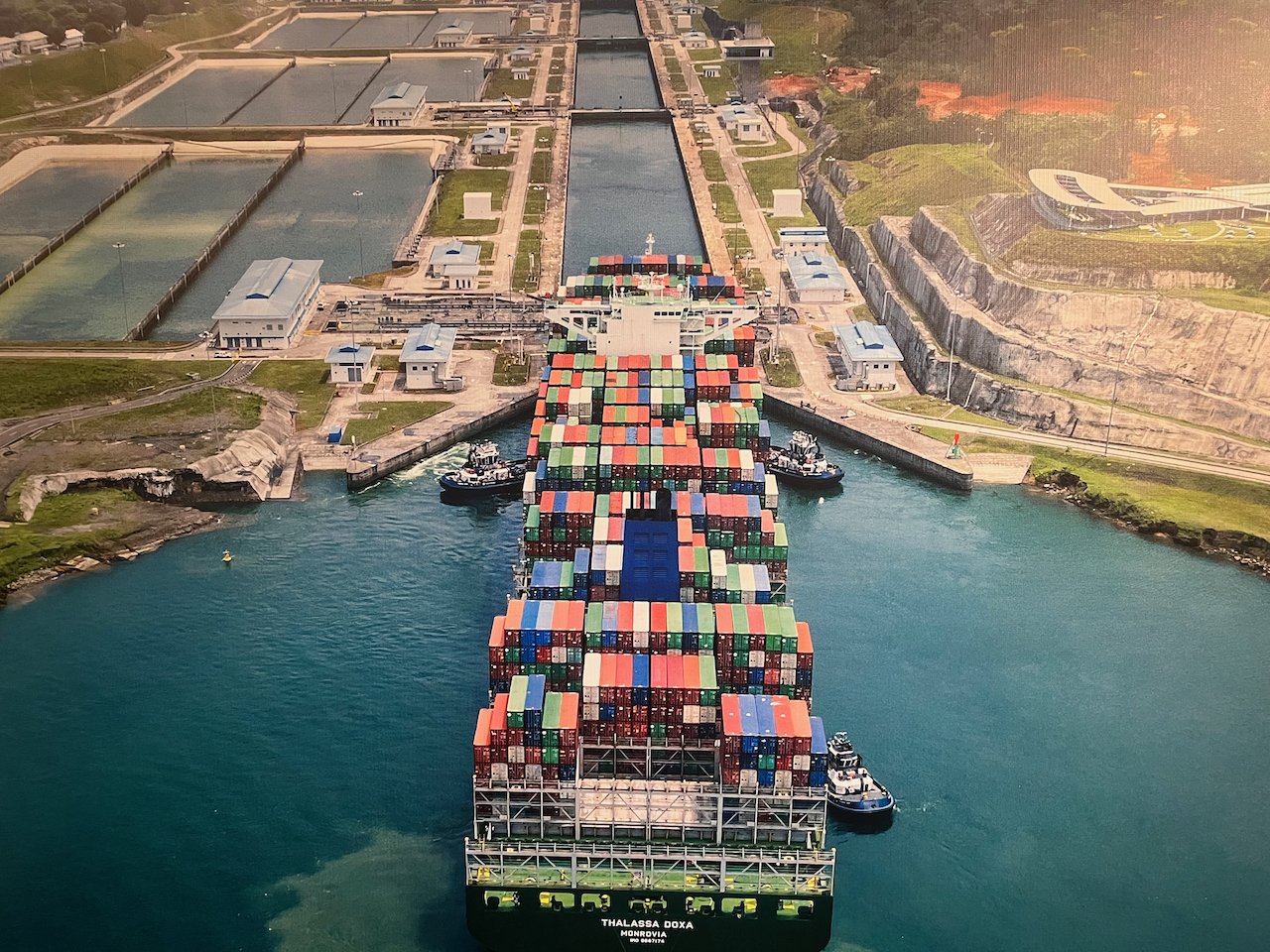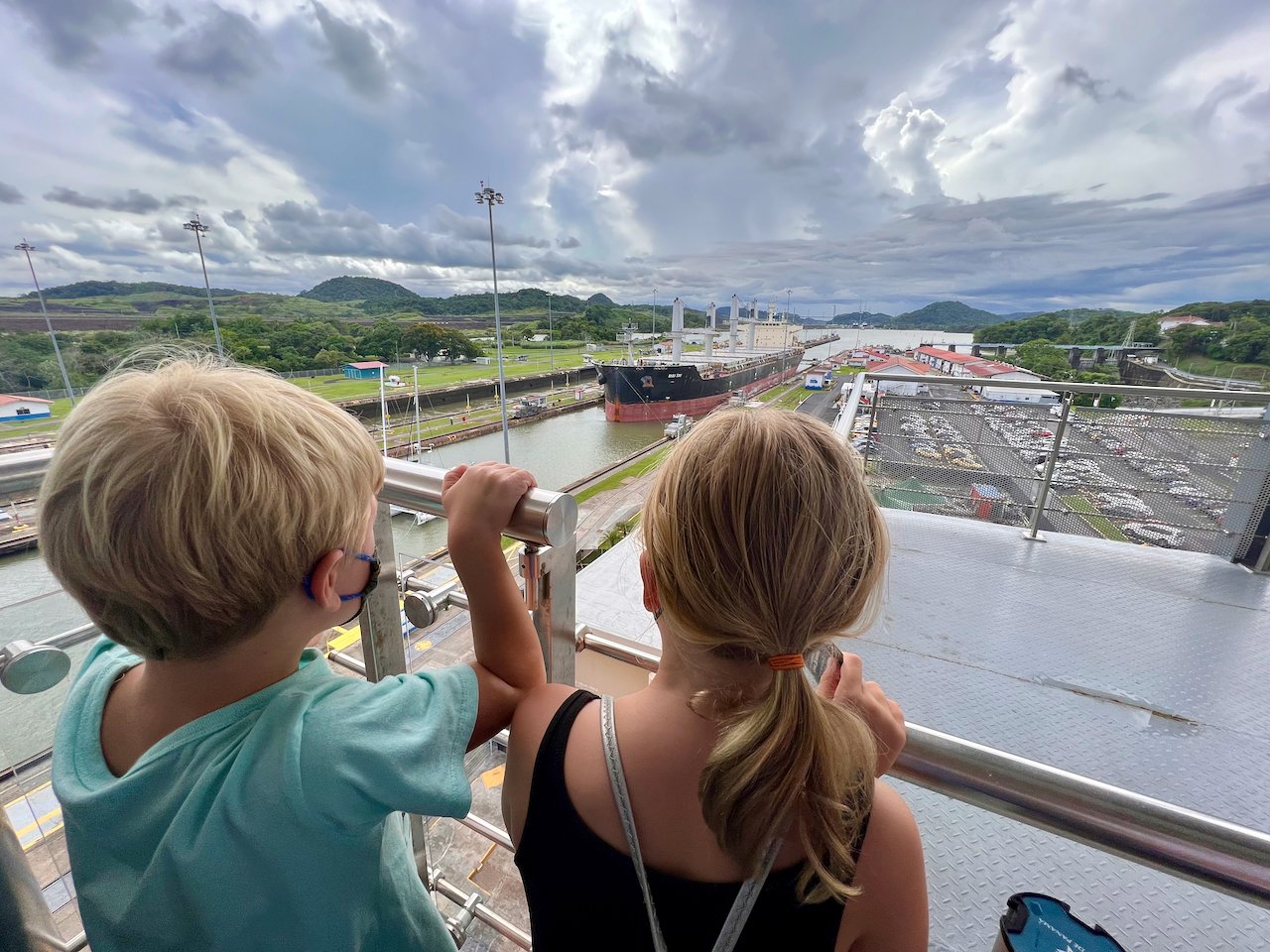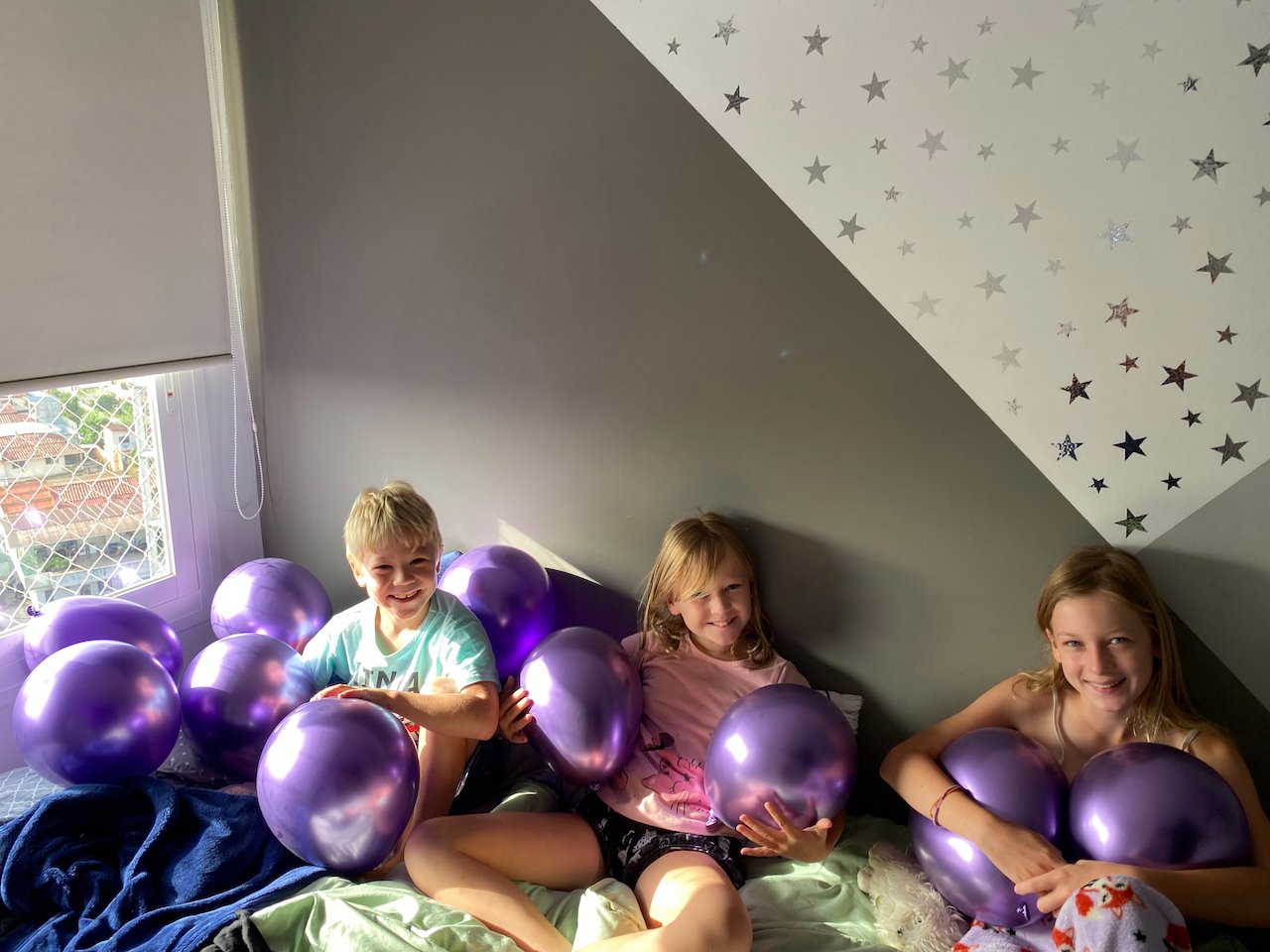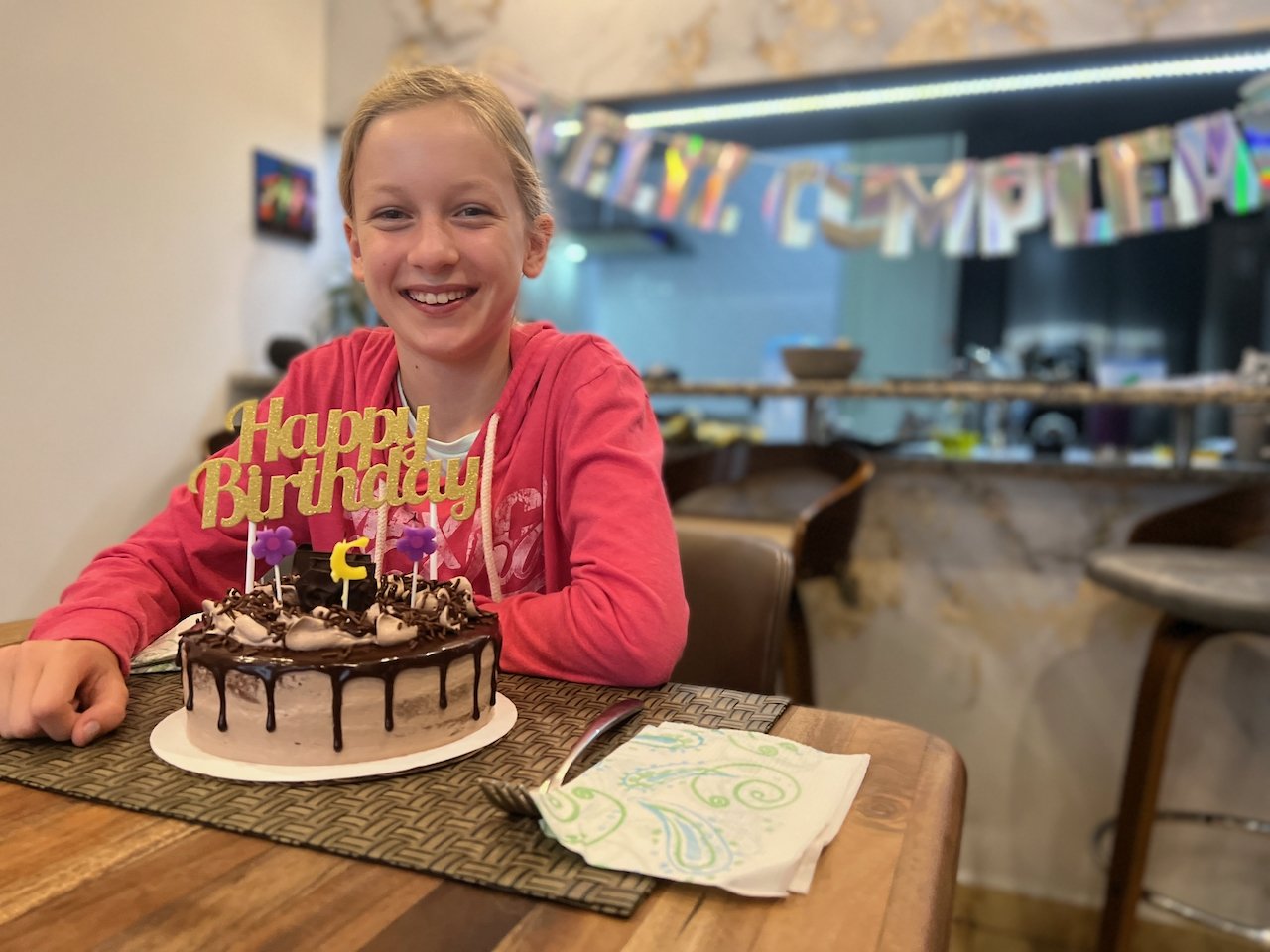As far as border crossings go, the traverse from Costa Rica to Panama was one of our smoothest. That’s not to say we didn’t have some issues understanding where to go, who to talk to, and which building was the main building, but we were only there for a total of 2 hours and had some friendly chats with border agents. One agent was really impressed with our vehicle as he had never seen a Sequoia like ours. He was doubly impressed that it looked so good for having driven all the way from that snowy, cold country of Canada.
The first unique feature of Panama that we noticed was the number of speed traps and speed enforcement along the highway. Police on motorcycles would shoot radar ahead of you and then wave you over as you approached. Nearly every trap we passed had at least one car stopped. The speed limits would vary greatly as well; you would see the sign for 100km/h followed quickly by 60km/hr and then it may build up again but only to 80km/h. I was put in charge of watching and reporting the speed signs while Erik managed the cruise control.
We spent a quick night in the city of David and then made our way to Panama City where we rented a high-rise condo for 10 nights. Apart from traffic, and learning the unique left-turning systems on highways, it was a very smooth arrival and check-in. The kids got a kick out of taking an elevator to a “house” and really liked the modern décor of the condo. Our balcony looked out over the city and faced SE where we could get small glimpses of big ships entering or leaving the canal.
It rained every morning and often again in the afternoon. One of our first outings was a trip into the Old City via the subway. The train and platforms were very clean, easy to navigate, and quite modern. To help reduce the spread of airborne germs, the signs on the train asked riders to wear masks and refrain from speaking. The city streets, like any city, varied in cleanliness and modernity. We walked through a few areas where breakfast vendors were serving yummy-smelling meals for very low cost. Plastic chairs were full of families, and lively conversations competed with road noise. Building walls doubled as art canvases and, as we walked toward the Old City, Spanish architecture began dominating the vistas. We perused gift shops, cooled off with cake and Italian sodas, and explored along the shoreline. After a shockingly expensive lunch, we could see the clouds threatening more rain and grabbed a taxi home. No sooner had we pulled away from the curb than the rain began pouring from the sky. Streets quickly filled with flowing rivers. Sidewalks became unsafe with powerful chutes of water tumbling three stories from the tops of buildings where downspouts didn’t exist. Parked cars turned into percussion instruments with the deluge of rain pelting their roofs. We felt fortunate that we found our taxi when we did.
The next outing was a more challenging drive to the BioMuseo. It was pouring, again, which made reading road signs and spotting the right turns extra challenging. After a couple of missed attempts, we made it just as the rain let up. This small but mighty museum is designed by the renowned Canadian-born architect Frank Gehry and focuses on the natural history and biodiversity of Panama. It’s a beautiful building full of informative and creative exhibits. We were in awe of the multi-screen movie and humbled by the amount of new information that we learned. Did you know that, before the canal was built, Panama was a natural land bridge crossed by many species of animals for thousands of years? Using DNA, we have learned that many North American species are decedents of species that predominately live in South America and vice versa. We were amazed to see a life-size giant ground sloth and some other extinct animals.
Another sobering exhibit available to see covered climate changes and what raising sea levels would mean for Panama. It was very scary and sad to see the sea level predictions. The museum itself will be fully submersed. The predictions reached out to 2050 which really isn’t that far away. The exhibit has lots of fun and interactive ways for the kids to engage in the content including an “I Promise” board where the kids could choose a few, or a lot, of actionable habit changes that would support helping to reduce the problem. The exhibit’s design helped to set the kids’ understanding of some of the challenges of climate change.
Over twelve years ago, Erik was sent on a military exercise to Panama. During one of his free days, he took a tour into the forest to visit an Embera village. He remembered it as a highlight of his visit and was eager to see if he could find that same village and take the rest of us to see its magic. It worked. We were able to visit the same village that Erik had visited. It started with a boat ride up the Chagres River. We stopped halfway to take a kilometre-long walk into the jungle to see a waterfall. The kids walked barefoot, just like our guides, and felt like they were breaking the rules and living free. The waterfall was lovely but not exceptional. They have since spoken only about the walk and not the falls. Back in the boat, we continued upstream until reaching the village. We were greeted by the villagers wearing traditional dress and playing a welcome song with their drums, percussion instruments, and flutes. They asked us to look around, make ourselves comfortable, and have a look at their crafts. We were given an hour-long demonstration, in Spanish, about their way of life including how they dye their clothes and weave their plates and baskets. They fed us lunch of tilapia and plantains wrapped in a banana leaf. After lunch, the ladies danced for us while the men played the music. We were invited up to dance too. We bade farewell and rode a much quicker ride downstream and back to our truck.
If we were to offer any observations from the village and the lifestyle of its inhabitants, it would be to say that simplicity and community are probably two aspects of one’s life that don’t get nearly enough attention or consideration in North America. Everyone was helping and contributing to the goings on; we watched men help to paint the brown “tattoo” markings on each other and the ladies’ bodies, we saw elder ladies take the crying babies for a walk to see something distracting, and we even saw a young girl pick some dirt out of a boy’s ear (and it wasn’t her brother). Their homes were very basic with thatched roofs and wooden walls, materials sourced from the land. The only brick building was the three-room school that had been built by a charity. The school teacher comes from the city on Mondays, sleeps over until Friday, and then returns to the city for the weekend. Community members heading to the city for football games and for extra work will commute on the long boats together and pick up teammates from other villages along the way. It truly seemed to be a simple (but not easy) way of living full of connection and sense of purpose.
The next site on our list was the Gamboa Rainforest Reserve primarily because there is a sloth sanctuary on site. We got a bit turned around looking for the building but managed to arrive right as the resident sloths were being fed their morning meal. The staff were very friendly and chatted in both Spanish and English about the animals, their diets, and how the Reserve primarily works elsewhere so that the sensitive sloths are not inundated with human stimulation. The six sloths we got to see have been deemed as “lifers” (they are unable to be rehabilitated and released back into the wild) and are now the ambassadors for their kind. Yes, they were as cute as you’d expect. They were quite active until their bellies were full at which point they found a comfy position and became statues. In the wild, sloths tend to live alone. At the sanctuary, all but two require their own enclosure as they don’t get along well together. Two, however, arrived together and prefer to be in each others’ company. Also, did you know, that there are three types of sloths that can be found in Panama, one of which (pygmy three-toed) lives exclusively on Isla Escudo de Veraguas, an island off the Caribbean coast of Panama?
Also at the Rainforest Reserve, there is a large breeding program for the blue morpho butterfly. We were able to walk among these stunningly blue creatures as they went about their very short 115-day-long lives. They moved so quickly, that we didn’t get any great photos, but we certainly enjoyed seeing them float and dive and flutter around. We were also shown the nursery where chrysalises hung from supporting branches under heat lamps. This is just one of the many programs being supported by the Gamboa Rainforest Reserve. It’s another must-see location in Panama.
On our way back to the city, we stopped at the Miraflores Locks and Visitor Centre on the Panama canal. This was our first time being up close to one of the locks. Unfortunately, the visitor centre’s museum was closed, but the viewing platforms were still open and we were able to watch a couple of ships make their way through the locks. One point of note, if you plan on visiting, make sure to check the online ship schedule so that you can time your visit to include a passing vessel. We arrived unaware and had to kill 90 mins at a local ice cream spot (darn!) before returning to see the ships. It’s pretty impressive!
One final highlight of Panama City was Claire’s 11th birthday. She requested a trip to the mall so we found the most modern one in the city! It had a little of everything and she happily found a few new things to call her own. Home-made lasagne, caesar salad, and a fancy cake were her only other requests which we were able to provide! Birthday smiles are the best!
Panama City marked the final destination on our Central American Edventure. We were a bit sad to say it out loud. We drove back to San Jose, Costa Rica, and spent a few days packing for our flight to Canada. We said farewell to Chuck who was staying in Costa Rica until Erik flew back to drive it to Canada with Drew (that’s another story). Time to go “home” for some sorely missed hugs from family and friends. Thanks for sharing our Edventure with us!










